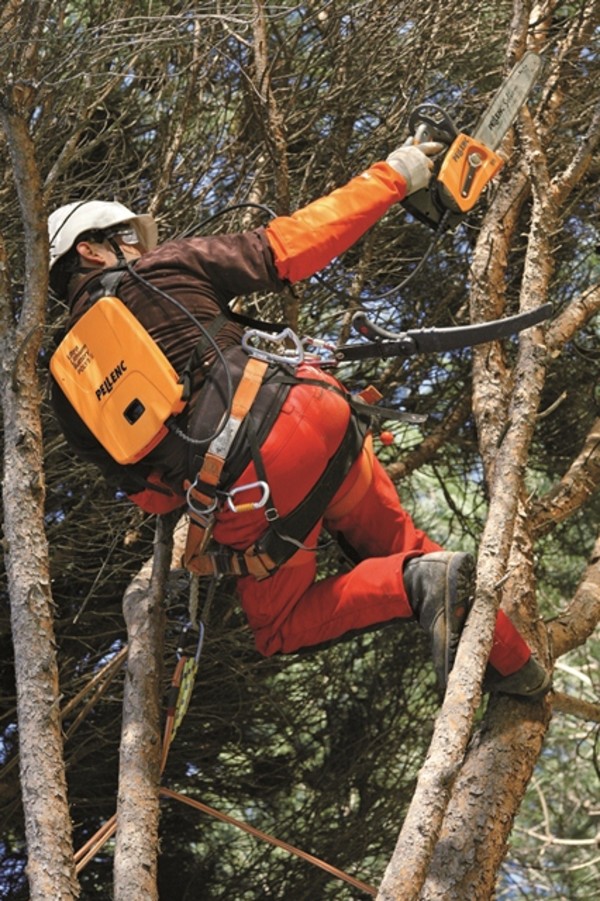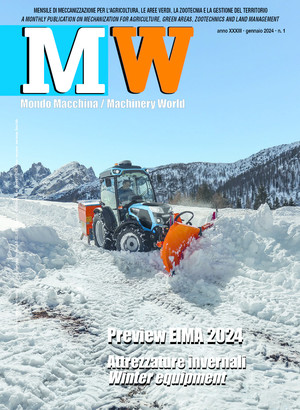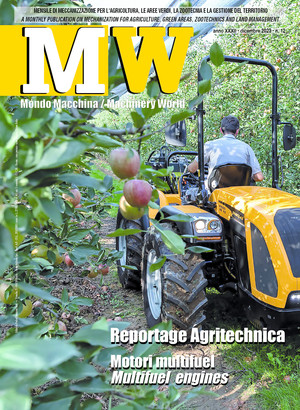
The chainsaw: necessary and multipurpose
The chainsaw is a fundamental tool for forestry work, but also for the management of tree crops and green areas. The choice of model must take into account the nature of the operation, which may be more or less demanding for the machine. Battery-powered models are also successful in the hobbyist market, but the topic of correct maintenance of the tool and safety procedures remains central
The chainsaw is an indispensable work tool for forestry as well as for tree cultivation, but also for gardening; so much so that today it has become commonly used equipment not only in farms, but also in many private homes. The first chainsaws appeared between the two great world wars, but they were very heavy and bulky, they could only be used by two operators at the same time, and they were dedicated almost exclusively to the demolition of large trees. Only after the Second World War did the first single-operator machines appear on the market, easily transportable and comfortable to use also for preparation and pruning work. Since then, the evolution of the product has been remarkable, so much so that now there are many types on the market, with very different technical characteristics and prices. In fact, the machines on the market differ from each other for type of engine used (electric or endothermic), for the application for which they were designed (felling, limbing/preparation, pruning), for power supplied, for weight (or even for the weight/ power ratio), for design, for ergonomics, for the intrinsic level of safety, and finally for price; to make the correct choice it is therefore important to have a thorough knowledge of the subject.
Main use
The chainsaw is a very versatile tool, which adapts to carry out work in different areas. Whether it is for professional use or in the field of “do it yourself”, you will find yourself using it for many hours continuously. It is therefore best to focus carefully on your needs to optimize the choice of machine, in order to make it more powerful and less tiring to use
in the prevailing working condition. From this point of view, it is first necessary to choose the “power” of the chainsaw, expressed in kW (or Hp), which then also influences the weight of the machine. In making this choice it is also necessary to take into account the level of experience of the user. Especially for beginners, the choice must lean towards smaller, lighter and more manoeuvrable machines. A chainsaw that is too powerful and heavy strains your hands and arms very quickly, which leads to a considerable increase in the risk of causing very serious injuries. For professional use, the type of wood and the size of the trees are also fundamental factors to be considered in the choice. The demolition of large trees, in particular of hardwood, requires a larger chainsaw with a more powerful motor. In these cases, choosing models that are too small would entail such an amount of stress to cause premature wear of the machine.
Basically, for essentially amateur use, it is better to opt for not too powerful equipment with a power of 1-1.5 kW (1.36-2 Hp), which is also as light as possible. The same criteria can also be used for chainsaws intended for professional limbing and preparing. For professional uses, intended instead only for pruning (landscaping and pruning in tree crops), it is best to opt for very light machines, with straight 25-30 cm bars at the most and power between 0.75 and 1 kW (1-1.36 Hp). In this sector, especially for use in tree-climbing or in the basket, the use of machines equipped with an electric motor and battery is growing, slowly replacing the classic endothermic two-stroke engine that for these uses has always very small displacements ranging from 25 to 35 cm3. However, when using these small machines you need to be very careful, especially beginners. Although they were designed and conceived to be used with two hands, it is often very easy to swing them using one hand. In this case, however, the risks of injury become very high. It becomes much more difficult to control any jolts and the hand guard that engages the chain brake often cannot engage when needed. For purely professional use, in the area of felling, endothermic engines still dominate the market, and in this case we are dealing with machines that normally have displacements of more than 60 cm3, powers ranging on average from 3.5 to 6.5 Kw (4.75 to 9 Hp), and long bars from 50 cm up. In these cases we are dealing with rather heavy machines, extremely powerful, and therefore not recommended for neophytes, and also impractical to dedicate even occasionally to pruning or limbing.
For multi-purpose use, to prune branches and cut down small trees, equipment with guide bars is preferred, with lengths of 35-45 cm equipped with motors with power ratings of 1.5-2.5 kW (2-3.5 Hp). In this case it is better to lean towards electric motors (connected to the 220 V power grid with a cable) for sporadic use, while machines with endothermic engines are certainly more suitable for daily or very intensive use.
Length of the blade guide bar
The choice must be made based on the size of the trees, but also on the level of experience of the operator. More experienced operators must have at least two guide bars with different lengths for the various types of trees. A shorter guide bar is lighter and easier to manoeuvre, for example during limbing. The long guide bar is used for larger trees. For the felling of very large trees it is sufficient to have a bar a little longer than the radius of the shaft to be felled, while for small trees it is more convenient to have a bar slightly longer than the diameter of the trunk.
Maintenance
Whatever the choice, it is important to remember that chainsaws are machines that require scrupulous and frequent maintenance. For all types of chainsaws, before each use be sure to check the correct adjustment of the chain tension and the oil level for lubrication. The correct tension of the chain must also be re-checked periodically during intensive use. In fact, the more a blade is used, the warmer it gets, and therefore it tends to lengthen and to loosen. It is also necessary to frequently lubricate the transmission pinion located at the end of the guide bar and to check that it does not have burrs that could cause the chain to jump. The same check must also be extended to the remaining part of the guide rail along the entire length of the bar. For machines equipped with an internal combustion engine, it is also necessary to carry out further periodic checks regarding the level of the mixture in the tank and the state of the spark plugs, air filter and fuel filter.
Safety recommendations
Given the fact that the chainsaw is a very dangerous tool that anyone in our country can buy, it is advisable to take a special course before using it. You do not become an expert overnight, and using incorrect techniques makes injuries much more likely. It is also essential to check that you are dressed and equipped appropriately for the work you are going to do. Wearing adequate protective equipment, you can avoid injury in many cases, even when making gross mistakes. As far as clothing is concerned, there are international standards that establish mandatory characteristics, and it is therefore a good idea to check that the chosen PPEs have been “approved”. In any case, to operate a chainsaw safely, you must have: helmet with acoustic and face protection, protective goggles, forest jacket that offers a suitable covering of the upper part of the body, cut-proof protective trousers, forest boots and cut-proof gloves.
The minimum requirements
If you ever use a dated machine, check that it has at least kickback protection and a chain brake device (which ensures that the chain stops if the chainsaw is not used correctly or in the event of a kickback); that the accelerator lock is present (which allows you to accelerate only when you continue to press a specific button on the handle with the palm of your hand); that there is a chain stop pin that blocks it in case of breakage or derailment; that the machine is equipped with a protection shield for the right hand, to protect the operator’s hand in case of chain breakage or derailment; and lastly, that the machine stop command is placed in an easily accessible position.








